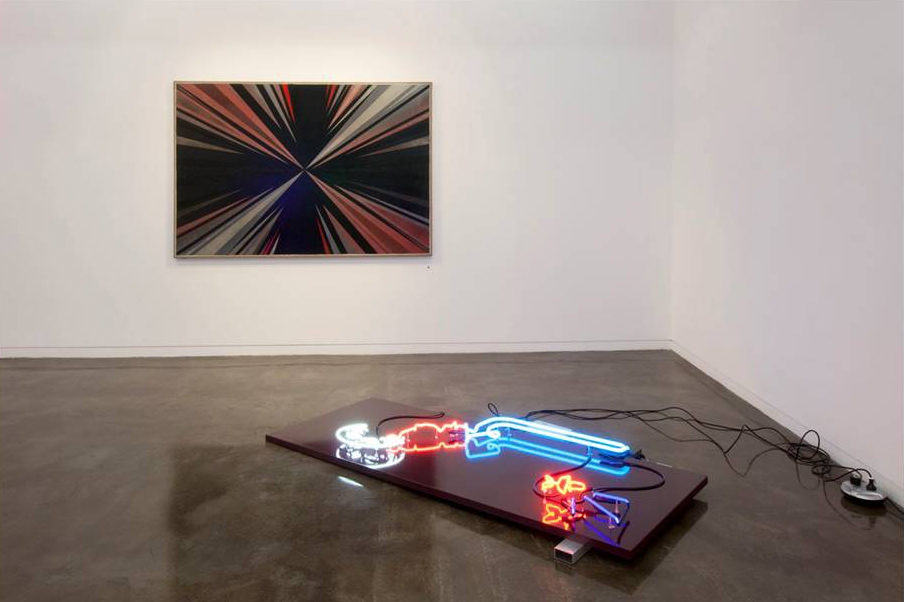This collision of styles describes Ryder's interest in a reduction of form, colour, line and medium as a parallel to the compaction of modern art history.
Image: Giles RYDER, Life without rituals (installation view), 2010
Gilles Ryder
Born 1972, Brisbane, Queensland
Giles Ryder's work is preoccupied with abstraction, but his interest is in minimalism. He started life as an artist later than some, having worked as an industrial painter on Brisbane's Story Bridge for six years before entering art school. The industrial influence, alongside that of the great abstractionists such as Rothko, is visible in his art with glossy, hard surfaces of colour evoking 'car culture'. He also uses neon signage and the reflective surfaces of advertising and consumption, and pared back, pearlescent and glossy striped paintings. All of these require interactivity with the viewer – the position from which the work is seen directly influences its effect.
In a recent (2007) exhibition at Peloton, a non–profit space he directs in Sydney, minimalist stepped coloured shelves, suggesting Donald Judd, protruded from the wall. Coated in reflective and glossy surfaces they were paired with a series of visceral, synthetic shapes made from expandable aerated foam, spray painted in bright colours, on aluminium rods – anything but sleekly sculptural – in the centre of the space. A pair of minimalist striped paintings, auto–lacquer on aluminium, completed the group. This collision of styles describes Ryder's interest in a reduction of form, colour, line and medium as a parallel to the compaction of modern art history.
Louise Martin–Chew from her Samstag essay, Alternative Realities
2008 Anne & Gordon Samstag International Visual Arts Scholarship
2008 Guest Student, Kunsthochschule Berlin-Weiβensee, Germany
2005 Master of Visual Arts, Sydney College of the Arts, University of Sydney
2003 Bachelor of Visual Arts (Honours), Sydney College of the Arts, University of Sydney
2002 Bachelor of Visual Arts, Queensland College of Art, Griffith University, Brisbane

